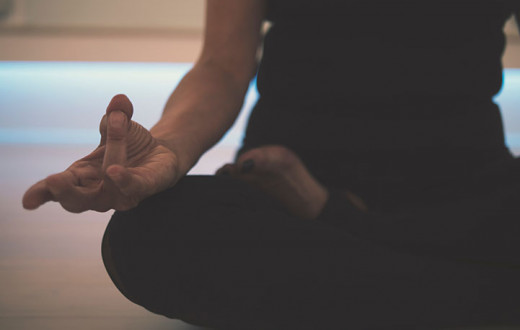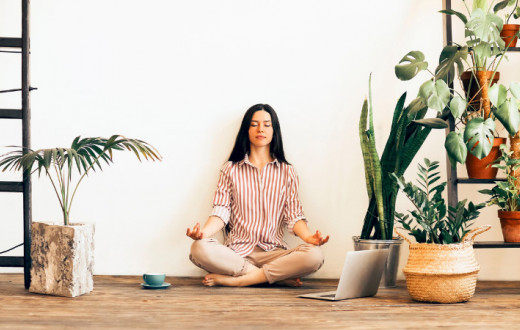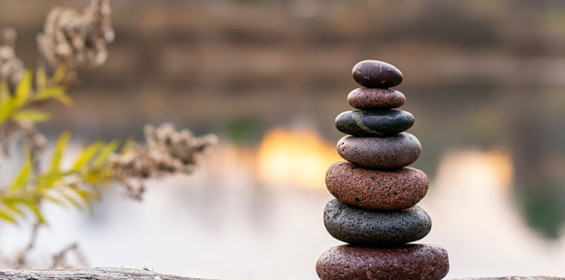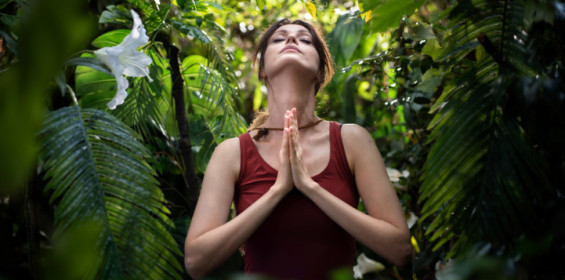By Krystal Childrey
As research continues to show the benefits of deep meditation, more and more people are turning to the practice. While it’s great that more people are seeking out meditation, the reality is many people will give up on the practice before giving it time to work. There are numerous reasons beginners may give up on the practice, but the one complaint repeatedly mentioned is that meditation is too difficult.
As the saying goes, “nothing that’s worthwhile is ever easy.” Achieving a deep state of meditation takes patience, consistency, and practice to master. However, there is a way to speed up the process. The secret lies in using breathing exercises as a gateway into deeper meditation. Before we dive into the details, let’s take a step back in time and explore how the practice of meditation has evolved over the years.
A brief history of meditation
Meditation has been practiced as a way of life in India for thousands of years, well before becoming a popular wellness trend in the West. Its origins date back to as early as 5,000 BCE when Indians documented evidence of the practice, leaving behind wall art of people seated in meditation postures.
The practice of meditation emerged as part of ancient religious and spiritual traditions. The Vedas, ancient scriptures that form the foundation of Hinduism, are the earliest written evidence of the practice, and the scriptures are a respected source of wisdom worldwide. Meditation is a central component of traditional yoga texts, and it is widely practiced in Buddhism as well.
Traditionally, meditation was performed as a spiritual practice to explore the existence of the soul and connect to higher levels of consciousness. In these traditions, it is part of a path towards achieving liberation, a state of pure bliss and inner peace that brings about an end to individual suffering.
As the practice evolved, studies began to emerge regarding meditation’s health benefits, drawing interest from Western society. Mindfulness meditation quickly caught on in the United States to calm the mind and reduce feelings of stress and anxiety. Other forms of meditation, such as loving-kindness meditation, body-scan meditation, and breath meditation, also became widely-used as self-care techniques.
The breath as a gateway into meditation
Yogis have used pranayama techniques for centuries to regulate the breath and prepare the mind for deep meditation. Even in modern forms of yoga, the breath is a vital part of the practice, allowing the body to flow effortlessly through asanas, or yoga poses.
According to the Yoga Sutras, gaining control over the breath leads to mastery over the mind, and modern science is beginning to catch up to this concept. Research studies suggest that deep breathing exercises can stimulate the vagus nerve, activating the parasympathetic nervous system and producing a calming effect on the mind and body.
Breathing exercises work great even as a standalone practice, but their effects can be even more profound when combined with meditation. During SKY Breath Meditation, individuals perform a series of breathing techniques that vary in frequency and intensity. Independent research has shown incredible results for increasing mindfulness, developing concentration, and decreasing stress and anxiety levels with this breathing meditation.
4 breathing exercises for deeper meditation
Due to our busy lives, the mind has become restless—constantly thinking and processing information. So it’s not surprising that our minds continue to wander when jumping straight into a meditation practice. But what if you took time before your practice to prepare yourself for a deeper experience?
The key to deep meditation is calming the mind and body before your practice, and breathing exercises can do just that. When you start your meditation practice with a clear mind and a relaxed body, you’re more likely to enter into deeper states of meditation. Let’s take a look at 4 breathing exercises you can try before your next session.
1. Bellows breath: Also known as bhastrika in Sanskrit, this pranayama breathing technique involves a series of quick and forceful inhales and exhales. This exercise increases oxygen in the body and sharpens the mind, making it great to perform before your meditation practice. Since this is an energizing breath, avoid performing it right before bed.
How to do it: Sit up tall, relax the shoulders, and take a few deep breaths in and out through the nose. Fill the belly up with air as you inhale.
Make a fist and fold your arms, placing them near your shoulders.
Inhale deeply, raise your hands straight up and open your fists.
Exhale slightly forcefully, bring your arms down next to your shoulders and close your fists.
Continue for 20 breaths.
Relax with palms on your thighs.
Take a few normal breaths.
Continue for two more rounds.
2. Diaphragmatic breathing: You may also hear this technique referred to as deep breathing or belly breathing. Performing the exercise will slow down the sympathetic nervous system, reduce blood pressure, and decrease heart rate, resulting in decreased stress and anxiety. This technique quiets the mind, creating the perfect environment for deep meditation.
How to do it: You can perform this exercise either sitting up or lying down on your back. Place one hand on your belly and the other one on your chest.
Take a deep inhale through the nose to a count of 4, filling the belly up like a balloon. The hand on the stomach should rise, while the one on the chest stays still.
Take a slight pause at the top of the inhale, and then release the air from the belly to a count of 4, feeling the hand on the stomach lower back to its original position. Again, the hand on the chest should stay in place.
Practice this breathing exercise for 3-5 minutes, taking long, deep breaths into the abdomen.
3. 4-7-8 breathing: As its name suggests, this specific breath pattern involves a 4-second inhale, 7-second breath retention, and an 8-second exhale. It’s sometimes referred to as relaxing breath since the exhale is longer than the inhale, which produces a calming effect on the body. This effect results in powerful meditation and can even lead to a night of deep and restful sleep.
How to do it: Sit up with your back straight, relax the body, and release any muscle tension. Take a few deep breaths in through the nose and out through the mouth.
On the next inhale, breathe in through the nose. Fill the belly with air to a count of 4.
At the top of the inhale, pause and hold the breath for 7 counts.
Slowly breathe out through the mouth, making a whooshing sound as you exhale to a count of 8.
Repeat this exercise for 4 rounds.
4. Alternate nostril breathing: In yoga, alternate nostril breathing or nadi shodhana clarifies and purifies the body’s energy channels by alternating breaths between the right and left nostrils. This technique balances out imbalances in the body and creates a clearer headspace for deep meditation. Check out this video for a guided explanation of the technique.
How to do it: Sit in a comfortable position with your back straight and shoulders relaxed. Place the index and middle fingers of your right hand between your eyebrows. You will use the thumb to plug the right nostril during the exercise, and the ring finger to close off the left nostril.
Plug the right nostril with your thumb. Take a deep breath in through the left nostril to a count of 4.
Pause at the top of the inhale, release the thumb from the right nostril and plug the left nostril with your ring finger.
Slowly breathe out through the right nostril to a count of 4.
Begin the flow again, switching sides and breathing in through the right nostril.
Repeat for 5-10 cycles.
Take Meditation Practice to a Deeper Level with SKY Breath Meditation
When you’re new to breathing exercises and meditation, it’s normal to have a lot of questions. If you’re feeling stuck in your current practice or need some tips to take your training to the next level, join Beyond Breath—a free online introductory session to SKY Breath Meditation. SKY instructors go through a rigorous training program, and they are always available to help answer your questions. Find a session that works with your busy schedule today!
Krystal Childrey is a health and wellness copywriter located in Seattle, WA. She is a registered yoga teacher, mental health advocate, and member of the National Alliance on Mental Illness (NAMI). When she’s not writing or practicing yoga, she enjoys day hiking across the Pacific Northwest. You can find her on LinkedIn.





























